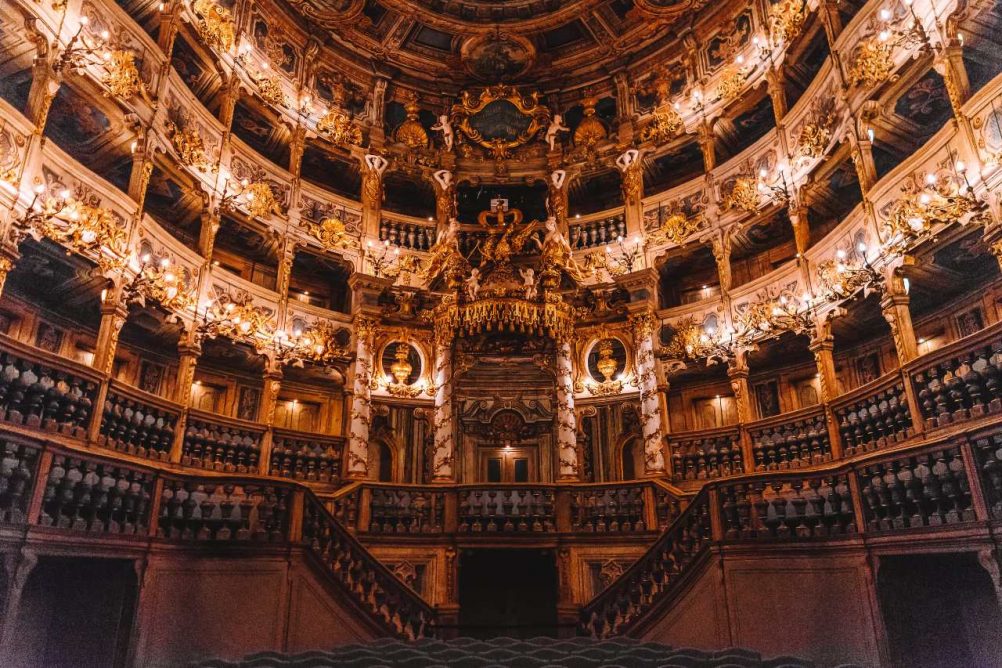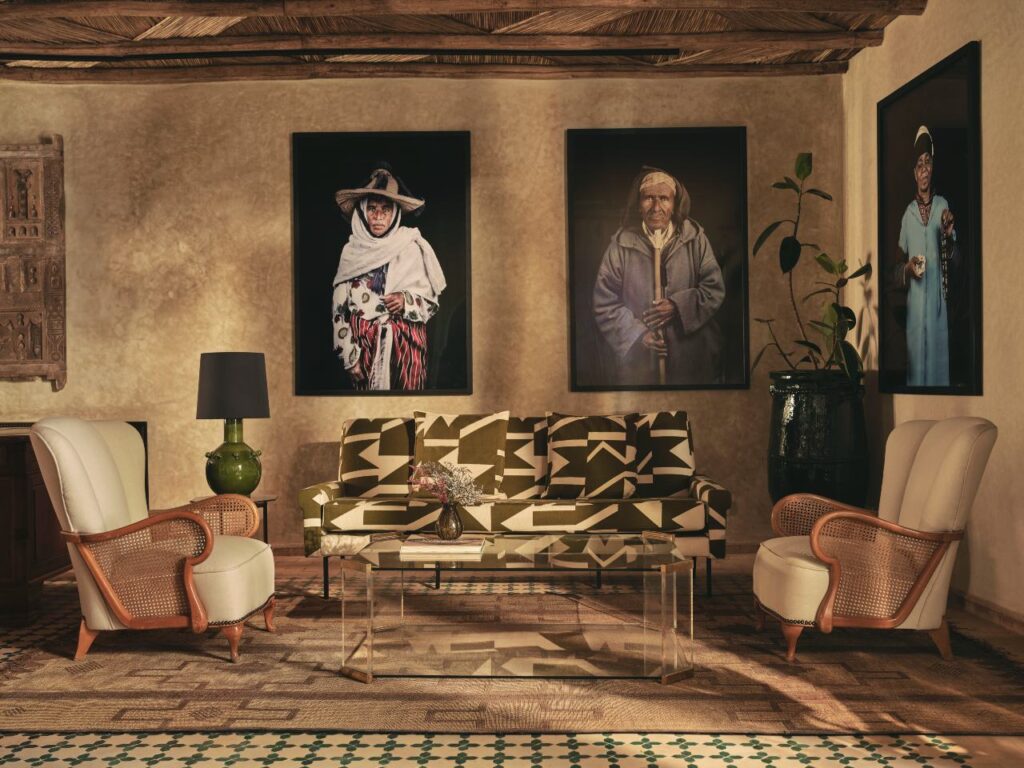Bayreuth: a town of parks and palaces created by a tragic princess
How Margravine Wilhelmine shaped one of Germany’s most inviting towns
Words by Ute Junker
Photo Melanie Schillinger
Bayreuth is known as the town that Richard Wagner built. When the composer built the Festspielhaus opera theatre and launched his own festival in this pretty town in the south German state of Bavaria, he created an event that is still a highlight on the European cultural calendar.
Look beyond Wagner, however, and you will find that this inviting town of parks and palaces was actually shaped by an earlier hand, a woman who deserves her turn in the spotlight. Wagner may have brought the crowds, but it was the Margravine Wilhelmine who made the town worth visiting in the first place.
Like Wagner, Wilhelmine left an opera house as part of her legacy (incidentally making Bayreuth the only town of 70,000 people to have not one but two opera houses). Both are statements of power and personality that reveal a lot about their creators.
Richard Wagner’s Festspielhaus was built in 1874 to the composer’s explicit instructions as the site of the annual Wagner festival. The Festspielhaus is remarkable for its acoustics (impressive), its orchestra pit (the musicians are hidden from sight), and its seats (hard – perhaps to ensure the audience stays awake during Wagner’s notoriously drawn-out operas).
What first drew Wagner to Bayreuth, however, was an older opera house – the margravial opera house, dating back to 1744. Once one of Europe’s most ornate opera houses, it was also known for its enormous stage depth of 27 metres, which is what initially attracted Wagner’s attention.
The margravial opera house was awarded a UNESCO World Heritage listing in 2012. UNESCO describes it as a “masterpiece of baroque theatre architecture” and the only entirely preserved example of its type. Exiting the dark, narrow passage that leads into the theatre, you enter a dazzling space overflowing with ornate decoration. Every surface is carved or gilded or painted. It’s astonishing to realise the entire thing is made of wood.
Just like the Festspielhaus, the margravial opera house was a work of self-glorification. With her husband, Margrave Friedrich of Brandenburg-Bayreuth, Margravine Wilhelmine formed one of the 18th century’s power couples. Her innate sense of grandeur is revealed in the opera house’s three-storey foyer, a stage in its own right, where the audience assembled to watch the entrance of their rulers. Even inside the theatre proper, many of the boxes offer a better view of the royal box than they do of the stage. No argument about who was the star turn here.
Wilhelmine loved the spotlight. As a Prussian princess, she was born to it. The sister of Frederick the Great, Wilhelmine was just as cultured as her beloved brother. She was an accomplished musician and composer: she wrote the libretto for the opera Artaxerxes, which was performed at the opera house opening, and corresponded with Voltaire. Her greatest achievement, however, was transforming the sleepy town of Bayreuth into one of Europe’s cultural capitals.
Wilhelmine went reluctantly to Bayreuth. She only agreed to the marriage to help heal a rift between her brother and her father. However, Wilhelmine and Friedrich got lucky. Not only did they fall in love, but just four years after they married, Frederick assumed the throne, allowing the couple to go on a building spree that transformed Bayreuth.
During the construction of the opera house, Wilhelmine also oversaw the creation of a “garden of wonders” using strangely-shaped natural rock formations outside the town. The sprawling rock garden known as Sanspareil also featured an outdoor theatre designed as an ancient ruin, and small huts perched atop huge boulders.
Wilhelmine’s most impressive gardening project, however, was her reworking of the Eremitage gardens. At 46 hectares, they cover an area greater than the Vatican. Previous rulers had used the Eremitage as a summer retreat, sleeping in cells and pretending to be monks. That wasn’t Wilhelmine’s style at all. She reworked the gardens to include an orangery, fountains, an outdoor theatre, grottoes and some ornate palace buildings.
Her most impressive construction however, was the Neues Schloss, or New Palace. Wilhelmine lavished money on this building, which remains the outstanding example of the style now known as Bayreuth Rococo. She paid well for quality workmanship, unlike her notoriously stingy brother. (The Neues Schloss still has its original wooden floors; those in the emperor’s Sanssouci palace at Potsdam wore away years ago.)
The décor is dramatic. The Palm Room, its rounded walls panelled in walnut, glows like a piece of amber. Lining the walls like sentinels are finely carved palm trees, each one different from its neighbours. Dancing across the ceiling, darting between the golden palm fronds, are birds, flying fish and miniature dragons. The palms are a masonic symbol: as well as being used for banquets, the Palm Room was used to host meetings of the royal masonic lodge.
Among the spectacular rooms in Wilhelmine’s private apartments is the drawing room, its gilded ceiling decorated with shells, coral and algae forming a glittering grotto effect. The Japanese room is just as exquisite. Its walls – decorated with trellises, plants and birds flitting between them – create the illusion of being outdoors.
However, the tranquillity of the Japanese room is an illusion. By the time she was decorating the rooms of her new palace, Wilhelmine’s marital bliss had disappeared, when her husband appointed her former best friend as his official mistress. Wilhelmine’s state of mind can be seen in the self-portraits she hung on the walls of her apartments. In one, she poses as Cleopatra, clutching her asp; in another, she is Lucretia, holding a knife to her breast. The Wilhelmine-as- victim sub-text is less sub, more text.
The most dramatic display of her internal anguish, however, can be seen in her mirror cabinet. Mirror cabinets – rooms with walls covered with large panes of glass – were at the beloved by the rich and the royal. The expense of the huge glass panes, as well as the way they magnified the existing light, made them the ultimate status symbol.
Naturally, Wilhelmine had to have one too. At some point before it was completed, however, WIlhelmine decided the room should reflect her distraught state of mind. So she ordered that the huge panes of glass should be cracked before they were stuck to the walls: a shattered room for a shattered life.
Like Wagner, Wilhelmine had a flair for the dramatic.



